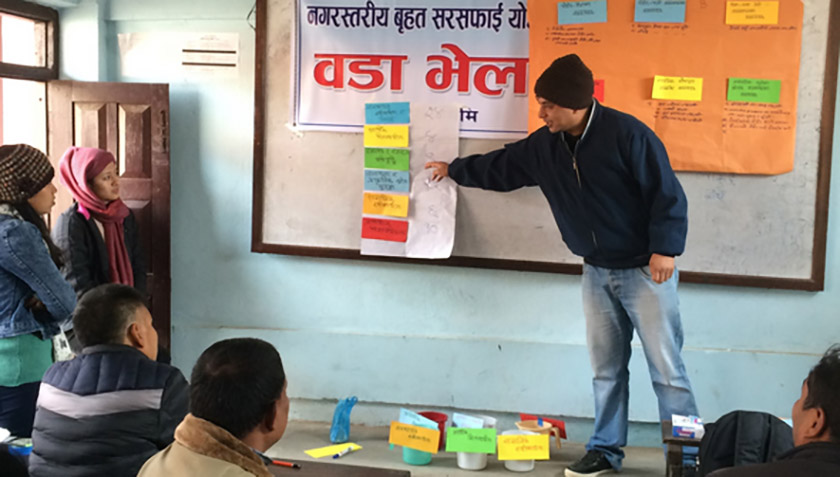Santiago
Making sanitation innovations available to practice – Santiago, the SANitation sysTem Alternative GeneratOr
By Dorothee Spuhler

Researchers at Eawag work hard to develop, implement and evaluate sanitation technologies and innovations. Some of us do that because they believe in the potential of non-grid, hybrid, modular, circular system that will help to close nutrient and water cycles. Others try to find more appropriate solutions for challenging conditions in the global South. While our motivations are diverse, there is one thing that we all have in common: we would like to see sustainable solutions implemented in practice.
However, practitioners often don’t have the relevant data available to consider these innovations when planning sanitation systems. In addition, there are few examples of large-scale implementation of innovations, leaving us with data that yields high variability and uncertainties. Another problem is the lack of knowledge, how different innovations might be combined into entire systems.
Within my PhD project I developed three methods to address these challenges and to contribute to more systematic and transparent planning for sustainable sanitation. These methods involve: (1) the generation of valid system configurations from a set of potential technologies, (2) the identification of a manageable set of locally appropriate systems as input for decision making; and (3) the ex-ante quantification of resource recovery potentials and losses of these systems. To develop these methods I used a design thinking approach with practitioners (municipalities, NGOs, consultancies) in Nepal and Ethiopia, and by compiling literature data and expert knowledge for more than 40 technologies in a technology library. Based on this, I implemented a software: the SANitation sysTem Alternative GeneratOr (Santiago).
In order to enable a broad range of practicioners to use Santiago, an interactive web-interface is required, which will be my next project in collaboration with the ETH scientific IT services and the Sustainable Sanitation Alliance (SuSanA). The evaluation of the tool will take place in city sanitation planning projects in Nepal. The project also covers the expansion of the technology library with additional technologies such as for emergency sanitation or organic solid waste management. Another step involves the testing of an approach for a Swiss urban neighbourhood in collaboration with ifak Magdeburg, the Water Hub, and Nena1, a Zurich-based housing cooperative. Based on this next phase, started in August 2020, I will be able to evaluate whether and how Santiago contributes to better decision making in line with the SDGs.
Please contact me if you are interested in working with me.
Key insights & upcoming steps
- The Santiago software can contribute to a more systematic and transparent generation of locally appropriate and sustainable sanitation planning options while also taking uncertainties in account
- An interactive web-interface for the software will be developed to allow for dissemination
- The software’s contribution to better sanitation planning and decision-making in line with the SDGs will be evaluated
Publication
Talk
Closed Cycles and Circular Society Symposium on 2-4 September 2020: A tool for the ex-ante quantification of resource recovery and loss potential of sanitation systems


